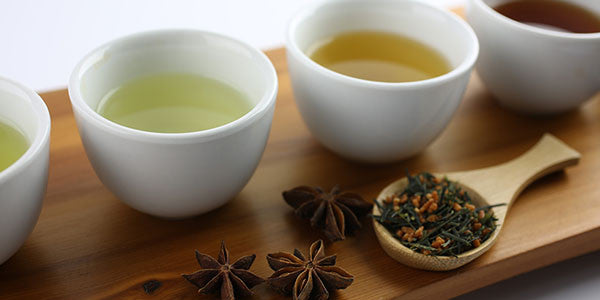Lizzy's Corner — tea steeping

Tea is an Agricultural Product
Posted by Amy R at
I have been a tea drinker all of my adult life, but before I became a serious tea drinker, I didn’t give much thought to where tea came from. I assumed that tea bags and the contents were made in a factory. I never thought of tea as an agricultural product until I started taking tea classes. Once I learned that tea comes from the processed leaves of the camellia sinensis plant, a whole new world opened up for me. The various types of tea (black, white, green, oolong and puerh) are all made from tea leaves and for the...
- Tags: tea steeping, tea tasting
Intro to Herbal Blends
Posted by Amy R at
This month we’re focusing on herbal blends. Also known as herbal infusions or tisanes, herbal blends are not technically teas because they aren't made from tea leaves. Instead they're made from flowers, spices, seeds and other botanical ingredients. Since ancient times, herbals have been used to treat illness and provide relaxation. They're popular with people looking for a warm, relaxing beverage without caffeine. Chamomile is a well known herb for drinking before bedtime either on its own or in a blend. We carry: Chamomile: whole chamomile blossoms Seattle Sunset: chamomile, rosehips, peppermint and many other herbs Weatherproof: aniseeds, chamomile, sage...
- Tags: chamomile, cold brewing, herbal tea, tea club, tea steeping
Tea Steeping Tips
Posted by Will R at
Before we started our tea journey, we didn’t pay much attention to how long we steeped our tea or the water temperature. Now we know better! Here are some general guidelines: Use the best quality water as possible. Keep a timer nearby and use it every time you make tea (smart phones and microwaves timers work well). Use a thermometer to take the temperature of the water when you want it cooler (a candy or meat thermometer work well). Once you boil the water, you can pour it into a mug to cool for a couple of minutes or add...
- Tags: tea steeping, tea tips
Japanese Tea Insights
Posted by Amy R at
During my Tea Tour of Japan, I learned so much about Japanese tea and tea etiquette and want to share a few insights: When you serve Japanese tea to guests, fill each cup up halfway and then go around again to each cup to finish pouring the tea. This way everyone gets a mix of lightly steeped and longer steeped tea. Keep pouring the tea until the last drop – this is the most flavorful part and called the “golden drop.” Pay close attention to the temperature of the water and steeping time. The higher the temperature and the longer...
- Tags: green tea, Japanese tea, tea steeping, tea tips
